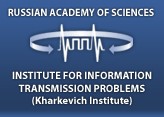








Optimal transport :
Theory and Applications
to cosmological Reconstruction and Image
processing
This is a web site of the research project Optimal transport: Theory and applications to cosmological reconstruction and image processing (OTARIE) supported by the French National Research Agency (Agence nationale de la recherche) under contract ANR-07-BLAN-0235. The project has been evaluated by two subject committees of ANR, Mathématiques et interactions (primary) and Sciences de l'Univers et géo-environnement (secondary).
Optimal transport is a mathematical subject connecting the fields of optimization, partial differential equations, and dynamical systems in finite and infinite dimensions. The basic problem of optimal transport, posed by the French mathematician Gaspard Monge, is to find a transport plan that connects two given distributions of mass and minimizes a certain transportation cost. Such plans turn out to be generated by solutions to suitable partial differential equations (PDEs), such as the Monge–Ampère and Hamilton–Jacobi equations.
The link to PDEs has been implicit in the 1940s work of the Russian mathematician Leonid Kantorovich, who discovered a duality inherent in many optimization problems, and was brought to light after the work of statisticians (Knott, Smith, Rachev, Rüschendorf), numerical analysts (Brenier), and dynamical system theorists (Mather, Dacorogna, Moser) in the 1970s and 1980s. Since then the subject developed into an active field covered by the ever growing number of journal papers, conference proceedings, and a few monographs.
One goal of the OTARIE project is to develop methods and tools of numerical transport optimization, building upon their previous work on applications to fields as diverse as cosmology, quantum control, and image processing. Another goal is to study PDEs arising as optimality conditions in optimal transport problems as mathematical models in their own right.
Logos of participating laboratories. First line, left to right: Poncelet (IUM); CEREMADE; IAP; Dieudonné (UNSA). Second line, left to right: IITP; IIEPT; LTCI; Cassiopée (OCA)
Four teams comprising over 20 researchers from research labs and universities of Paris, Nice, and Moscow are participating in the project. The team coordinators are:
The project has started on November 15, 2007, for a duration of four years and has been extended a further 9 months to allow inclusion of the workshop “Mathematics of particles and flows” held at the Wolfgang Pauli Institute, Vienna, 28 May–2 June 2012.
As of June 2009 (one year and a half after the start) we have prepared more than 30 publications, including 18 papers published or accepted in refereed journals, developed three software products, and organized three meetings (two of them international) with over 40 participants, including 25 colleagues form outside OTARIE.
OTARIE had a twin project RFBR 01-07-92217-CNRSL-a supported by the Russian Foundation for Basic Research in 2008–2011.
The OTARIE project coordinator, Andrei Sobolevskii, can be
contacted by email at 
Otarie is a French word for the sea lion. It is derived from the Greek ωταριον meaning “small ear.”